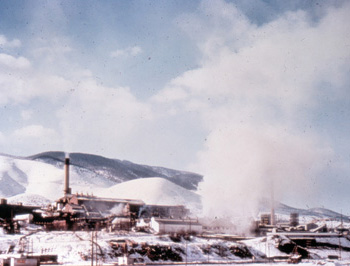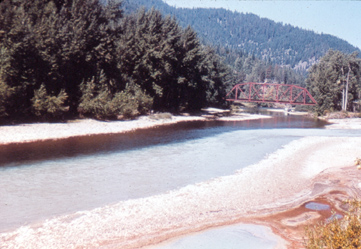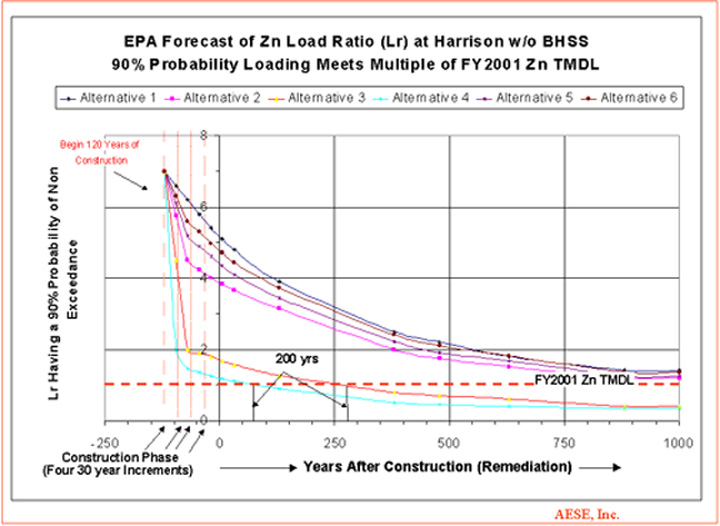


The attached figure was generated by AESE, Inc. using information described in "Technical Memorandum: Probabilistic Analysis of Post-Remediation Metal Loading". In EPA terminology, the Bunker Hill Superfund site consists of four operable units (OUs). Residential areas within the initial Bunker Hill Superfund Site (BHSS) or "Box" is Operable unit 1 (OU1). Non residential areas within the Box is OU2. The mine waste water treament plant also located in the Box is OU3. The remainder of the entire basin is OU4, and is the subject of the proposed plan. Another way to look at it is the propsed plan intends to address the entire basin minus the small 21 square mile "Box". Specifically, this figure forecasts for zinc attributable to Operable Unit 4 (OU4) for the portion or period of the graph from time t = 0 (time after EPA's construction on the remedial action has been completed) to t = 1000 years. In reality, the load of Zn at Harrison is composed of individual loads released from the Bunker Hill Superfund Site or OUs 1-3 and the load from OU4.
The curves generated from time t = -120 years (which is today) to t= 0 (which is 120 years in the future) was estimated by AESE, giving EPA the benefit of the doubt and assuming that major reductions in contaminant loading from OU4 would occur rapidly predominantly within early phases. Hence, the relatively steep curves for the more protective and stringent Alternative 4 as compared to the relatively shallow curve for the no action alternative or Alternative 1.
As described in the aforementioned tech memo, Lr = loading ratio relative to the FY2000 allowable total maximum daily load (TMDL) for zinc. The 90% chance for exceedance of the Lr is used in this Figure. Note that the contribution of Zn from the Bunker Hill Superfund Site (BHSS) which actually produces roughly 50% of the measured load at Harrison, ID has been removed from the analysis via mathematically "backing-out" the load. The graph assumes that the BHSS has been fully remediated prior to construction of the remedy for the CDARB. Another way to look at this would be to essentially double the values on the vertical axis. For example if one wanted the estimate for zinc forecast from Alternative 3 at Harrison, 370 years from now (250 years after construction has been completed) regardless of where the release occurred (i.e. OUs 1-4), then there would be a 90% chance of not exceeding 2 times the TMDL.
Another way to analyze the graph is as follows: Select an alternative say for example the no action alternative or Alternative 1. Today or at t = -120 years, assuming that the BHSS has been fully remediated, there is a 90% chance that the load at Harrison will not exceed roughly 7 times the FY2000 TMDL (legal limit). After 120 years (t = 0) of no action, there is a 90% chance that the load at Harrison will not exceed roughly 5 times the TMDL. Finally following the curve out to t = 1,000 years, the model predicts that there is a 90% chance of the load not exceeding roughly 1.2 times the TMDL at Harrison. Again this is only the portion of the load from OU4.
Note that all alternatives begin at the same starting point of Lr90 (t= -120) = 7 and diverge rapidly to different values of Lr90 at t = 0. This is due solely to EPA's assumptions regarding the amount of zinc contamination EPA thinks will be remaining after remediation has been completed. Note, that even the more aggressive Alternative 4 does not meet the FY2000 TMDL at the end of the construction period (120 years or t = 0). This is because EPA did not develop a more aggressive Alternative which would include removal of more contamination during the remediation period.